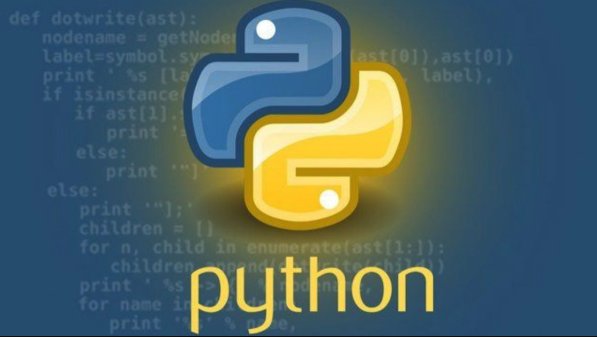Python 代码片段 |文档
在文章实战开发的过程中,我们经常会遇到一些这样那样的问题,然后要卡好半天,等问题解决了才发现原来一些细节知识点还是没有掌握好。今天golang学习网就整理分享《Python 代码片段 |文档》,聊聊,希望可以帮助到正在努力赚钱的你。
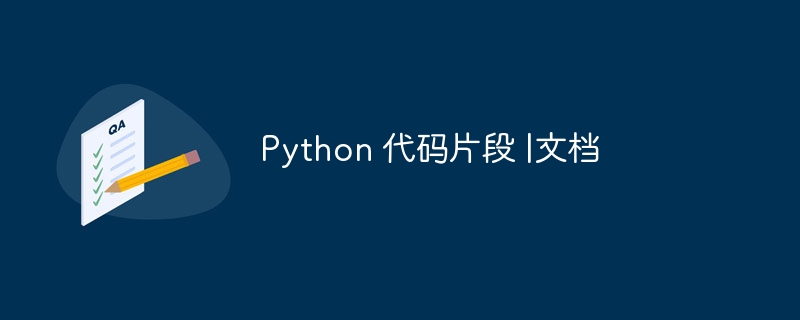
python 课程代码示例
这是我使用和创建的 python 代码的文档,用于学习 python。
它易于理解和学习。欢迎从这里学习。
我很快就会用更多高级主题更新博客。
目录
- 第一个节目
- 变量和数据类型
- 字符串
- 数字
- 获取用户的输入
- 构建一个基本计算器
- 第一个 madlibs
- 列表
- 列出函数
- 元组
- 功能
- 退货声明
- if 语句
- 如果比较
- 猜谜游戏2
- for 循环
- 指数函数
- 二维列表和 for 循环
第一个节目
此程序用于展示 print() 命令如何工作。
# this is a simple "hello world" program that demonstrates basic print statements
# print the string "hello world" to the console
print("hello world")
# print the integer 1 to the console
print(1)
# print the integer 20 to the console
print(20)
变量和数据类型
python 中的变量是用于存储值的保留内存位置。
数据类型定义变量可以保存的数据类型,即整数、浮点、字符串等
# this program demonstrates the use of variables and string concatenation
# assign the string "dipsan" to the variable _name
_name = "dipsan"
# assign the integer 20 to the variable _age
_age = 20
# assign the string "piano" to the variable _instrument
_instrument = "piano"
# print a sentence using string concatenation with the _name variable
print("my name is" + _name + ".")
# print a sentence using string concatenation, converting _age to a string
print("i'm" + str(_age) + "years old") # converting int to string for concatenation
# print a simple string
print("i dont like hanging out")
# print a sentence using string concatenation with the _instrument variable
print("i love " + _instrument + ".")
弦乐
用于存储和操作文本的字符序列。它们是通过将文本括在单引号 ('hello')、双引号 ("hello") 或多行字符串的三引号 ('''hello''') 中来创建的。示例:“你好,世界!”。
# this script demonstrates various string operations
# assign a string to the variable 'phrase'
phrase = "dipsansacademy"
# print a simple string
print("this is a string")
# concatenate strings and print the result
print('this' + phrase + "")
# convert the phrase to uppercase and print
print(phrase.upper())
# convert the phrase to lowercase and print
print(phrase.lower())
# check if the uppercase version of phrase is all uppercase and print the result
print(phrase.upper().isupper())
# print the length of the phrase
print(len(phrase))
# print the first character of the phrase (index 0)
print(phrase[0])
# print the second character of the phrase (index 1)
print(phrase[1])
# print the fifth character of the phrase (index 4)
print(phrase[4])
# find and print the index of 'a' in the phrase
print(phrase.index("a"))
# replace "dipsans" with "kadariya" in the phrase and print the result
print(phrase.replace("dipsans", "kadariya"))
数字
数字用于各种数字运算和数学函数:
# import all functions from the math module from math import * # importing math module for additional math functions # this script demonstrates various numeric operations and math functions # print the integer 20 print(20) # multiply 20 by 4 and print the result print(20 * 4) # add 20 and 4 and print the result print(20 + 4) # subtract 4 from 20 and print the result print(20 - 4) # perform a more complex calculation and print the result print(3 + (4 - 5)) # calculate the remainder of 10 divided by 3 and print the result print(10 % 3) # assign the value 100 to the variable _num _num = 100 # print the value of _num print(_num) # convert _num to a string, concatenate with other strings, and print print(str(_num) + " is my fav number") # converting int to string for concatenation # assign -10 to the variable new_num new_num = -10 # print the absolute value of new_num print(abs(new_num)) # absolute value # calculate 3 to the power of 2 and print the result print(pow(3, 2)) # power function # find the maximum of 2 and 3 and print the result print(max(2, 3)) # maximum # find the minimum of 2 and 3 and print the result print(min(2, 3)) # minimum # round 3.2 to the nearest integer and print the result print(round(3.2)) # rounding # round 3.7 to the nearest integer and print the result print(round(3.7)) # calculate the floor of 3.7 and print the result print(floor(3.7)) # floor function # calculate the ceiling of 3.7 and print the result print(ceil(3.7)) # ceiling function # calculate the square root of 36 and print the result print(sqrt(36)) # square root
获取用户的输入
此程序用于演示如何使用 input() 函数获取用户输入:
# this script demonstrates how to get user input and use it in string concatenation
# prompt the user to enter their name and store it in the 'name' variable
name = input("enter your name : ")
# prompt the user to enter their age and store it in the 'age' variable
age = input("enter your age. : ")
# print a greeting using the user's input, concatenating strings
print("hello " + name + " youre age is " + age + " .")
构建一个基本计算器
该程序创建一个简单的计算器,将两个数字相加:
# this script creates a basic calculator that adds two numbers
# prompt the user to enter the first number and store it in 'num1'
num1 = input("enter first number : ")
# prompt the user to enter the second number and store it in 'num2'
num2 = input("enter second number: ")
# convert the input strings to integers and add them, storing the result
result = int(num1) + int(num2)
# print the result of the addition
print(result)
第一疯狂
这个程序创建了一个简单的 mad libs 游戏:
# this program is used to create a simple mad libs game.
# prompt the user to enter an adjective and store it in 'adjective1'
adjective1 = input("enter an adjective: ")
# prompt the user to enter an animal and store it in 'animal'
animal = input("enter an animal: ")
# prompt the user to enter a verb and store it in 'verb'
verb = input("enter a verb: ")
# prompt the user to enter another adjective and store it in 'adjective2'
adjective2 = input("enter another adjective: ")
# print the first sentence of the mad libs story using string concatenation
print("i have a " + adjective1 + " " + animal + ".")
# print the second sentence of the mad libs story
print("it likes to " + verb + " all day.")
# print the third sentence of the mad libs story
print("my " + animal + " is so " + adjective2 + ".")
列表
列表是python中有序且可更改的项目的集合。列表中的每个项目(或元素)都有一个索引,从 0 开始。列表可以包含不同数据类型的项目(如整数、字符串,甚至其他列表)。
列表使用方括号 [] 定义,每个项目用逗号分隔。
# this script demonstrates basic list operations # create a list of friends' names friends = ["roi", "alex", "jimmy", "joseph"] # print the entire list print(friends) # print the first element of the list (index 0) print(friends[0]) # print the second element of the list (index 1) print(friends[1]) # print the third element of the list (index 2) print(friends[2]) # print the fourth element of the list (index 3) print(friends[3]) # print the last element of the list using negative indexing print(friends[-1]) # print a slice of the list from the second element to the end print(friends[1:]) # print a slice of the list from the second element to the third (exclusive) print(friends[1:3]) # change the second element of the list to "kim" friends[1] = "kim" # print the modified list print(friends)
列表功能
此脚本展示了各种列表方法:
# this script demonstrates various list functions and methods
# create a list of numbers
numbers = [4, 6, 88, 3, 0, 34]
# create a list of friends' names
friends = ["roi", "alex", "jimmy", "joseph", "kevin", "tony", "jimmy"]
# print both lists
print(numbers)
print(friends)
# add all elements from 'numbers' to the end of 'friends'
friends.extend(numbers)
# add "hulk" to the end of the 'friends' list
friends.append("hulk")
# insert "mikey" at index 1 in the 'friends' list
friends.insert(1, "mikey")
# remove the first occurrence of "roi" from the 'friends' list
friends.remove("roi")
# print the index of "mikey" in the 'friends' list
print(friends.index("mikey"))
# remove and print the last item in the 'friends' list
print(friends.pop())
# print the current state of the 'friends' list
print(friends)
# remove all elements from the 'friends' list
friends.clear()
# print the empty 'friends' list
print(friends)
# sort the 'numbers' list in ascending order
numbers.sort()
# print the sorted 'numbers' list
print(numbers)
元组
元组是python中有序但不可更改(不可变)的项目的集合。一旦创建了元组,就无法添加、删除或更改其元素。与列表一样,元组可以包含不同数据类型的项目。
元组使用括号 () 定义,每个项目用逗号分隔。
# this script introduces tuples and their immutability # create a tuple with two elements values = (3, 4) # print the entire tuple print(values) # print the second element of the tuple (index 1) print(values[1]) # the following line would cause an indexerror if uncommented: # print(values[2]) # this would cause an indexerror # the following line would cause a typeerror if uncommented: # values[1] = 30 # this would cause a typeerror as tuples are immutable # the following line would print the modified tuple if the previous line worked: # print(values)
功能
函数是执行特定任务的可重用代码块。函数可以接受输入(称为参数)、处理它们并返回输出。函数有助于组织代码,使其更加模块化,并避免重复。
在 python 中,函数是使用 def 关键字定义的,后跟函数名、括号 () 和冒号 :。函数内的代码是缩进的。
此代码演示了如何定义和调用函数:
# this script demonstrates how to define and call functions
# define a function called 'greetings' that prints two lines
def greetings():
print("hi, welcome to programming world of python")
print("keep learning")
# print a statement before calling the function
print("this is first statement")
# call the 'greetings' function
greetings()
# print a statement after calling the function
print("this is last statement")
# define a function 'add' that takes two parameters and prints their sum
def add(num1, num2):
print(int(num1) + int(num2))
# call the 'add' function with arguments 3 and 4
add(3, 4)
退货声明
return 语句在函数中用于向调用者发送回(或“返回”)一个值。当执行return时,函数结束,return后指定的值被发送回函数调用的地方。
此程序展示了如何在函数中使用 return 语句:
# this script demonstrates the use of return statements in functions
# define a function 'square' that returns the square of a number
def square(num):
return num * num
# any code after the return statement won't execute
# call the 'square' function with argument 2 and print the result
print(square(2))
# call the 'square' function with argument 4 and print the result
print(square(4))
# call the 'square' function with argument 3, store the result, then print it
result = square(3)
print(result)
如果语句
if 语句计算一个条件(返回 true 或 false 的表达式)。
如果条件为 true,则执行 if 语句下的代码块。
elif :“else if”的缩写,它允许您检查多个条件。
当您有多个条件需要评估,并且您想要执行第一个 true 条件的代码块时,可以使用它。
else:如果前面的 if 或 elif 条件都不为 true,则 else 语句将运行一段代码。
# this script demonstrates the use of if-elif-else statements
# set boolean variables for conditions
is_boy = true
is_handsome = false
# check conditions using if-elif-else statements
if is_boy and is_handsome:
print("you are a boy & youre handsome")
print("hehe")
elif is_boy and not (is_handsome):
print("youre a boy but sorry not handsome")
else:
print("youre not a boy")
如果比较
此代码演示了 if 语句中的比较操作:
# this script demonstrates comparison operations in if statements
# define a function to find the maximum of three numbers
def max_numbers(num1, num2, num3):
if num1 >= num2 and num1 >= num3:
return num1
elif num2 >= num1 and num2 >= num3:
return num2
else:
return num3
# test the max_numbers function with different inputs
print(max_numbers(20, 40, 60))
print(max_numbers(30, 14, 20))
print(max_numbers(3, 90, 10))
print("for min_number")
# define a function to find the minimum of three numbers
def min_numbers(num1, num2, num3):
if num1 <= num2 and num1 <= num3:
return num1
elif num2 <= num1 and num2 <= num3:
return num2
else:
return num3
# test the min_numbers function with different inputs
print(min_numbers(20, 40, 60))
print(min_numbers(30, 14, 20))
print(min_numbers(3, 90, 10))
猜谜游戏2
此脚本通过更多功能改进了猜谜游戏:
# this script improves the guessing game with more features
import random
# generate a random number between 1 and 20
secret_number = random.randint(1, 20)
# initialize the number of attempts and set a limit
attempts = 0
attempt_limit = 5
# loop to allow the user to guess the number
while attempts < attempt_limit:
guess = int(input(f"guess the number (between 1 and 20). you have {attempt_limit - attempts} attempts left: "))
if guess == secret_number:
print("congratulations! you guessed the number!")
break
elif guess < secret_number:
print("too low!")
else:
print("too high!")
attempts += 1
# if the user does not guess correctly within the attempt limit, reveal the number
if guess != secret_number:
print(f"sorry, the correct number was {secret_number}.")
for循环
for 循环用于迭代元素序列,例如列表、元组、字符串或范围。
这段代码引入了for循环:
# list of numbers
numbers = [1, 2, 3, 4, 5]
# iterate over each number in the list
for number in numbers:
# print the current number
print(number)
# output:
# 1
# 2
# 3
# 4
# 5
# list of friends
friends = ["roi", "alex", "jimmy", "joseph", "kevin", "tony", "jimmy"]
# iterate over each friend in the list
for friend in friends:
# print the name of the current friend
print(friend)
# output:
# roi
# alex
# jimmy
# joseph
# kevin
# tony
# jimmy
# use range to generate numbers from 0 to 4
for num in range(5):
print(num)
# output:
# 0
# 1
# 2
# 3
# 4
指数函数
指数函数是一种数学函数,其中恒定基数被提升为可变指数。
此脚本展示了如何使用 math.pow 函数:
# this script demonstrates the use of the exponential function
def exponentialfunction(base,power):
result = 1
for index in range(power):
result = result * base
return result
print(exponentialfunction(3,2))
print(exponentialfunction(4,2))
print(exponentialfunction(5,2))
#or you can power just by
print(2**3) #number *** power
2d 列表和 for 循环
python 中的 2d 列表(或 2d 数组)本质上是列表的列表,其中每个子列表代表矩阵的一行。您可以使用嵌套的 for 循环来迭代 2d 列表中的元素。以下是使用 2d 列表和 for 循环的方法:
# This script demonstrates the use of 2D List and For Loops
# Define a 2D list (list of lists)
num_grid = [
[1, 2, 3], # Row 0: contains 1, 2, 3
[4, 5, 6], # Row 1: contains 4, 5, 6
[7, 8, 9], # Row 2: contains 7, 8, 9
[0] # Row 3: contains a single value 0
]
# Print specific elements in num_grid
print(num_grid[0][0]) # Print value in the zeroth row, zeroth column (value: 1)
print(num_grid[1][0]) # Print value in the first row, zeroth column (value: 4)
print(num_grid[2][2]) # Print value in the second row, second column (value: 9)
print("using nested for loops")
for row in num_grid :
for col in row:
print(col)
这就是我们如何使用 2d 列表和 for 循环。
理论要掌握,实操不能落!以上关于《Python 代码片段 |文档》的详细介绍,大家都掌握了吧!如果想要继续提升自己的能力,那么就来关注golang学习网公众号吧!
 Java函数内存优化策略有哪些?
Java函数内存优化策略有哪些?
- 上一篇
- Java函数内存优化策略有哪些?
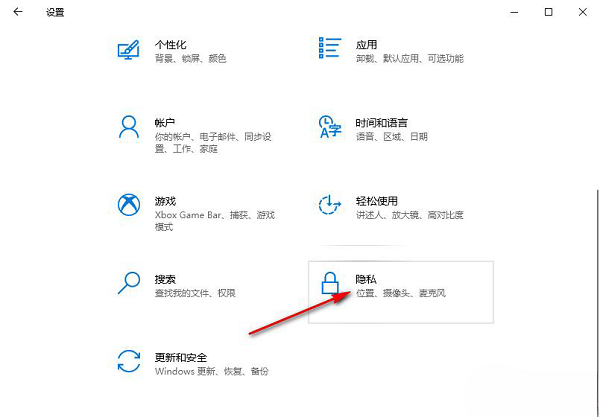
- 下一篇
- win10怎么关闭应用使用相机 win10禁止应用使用相机教程
-
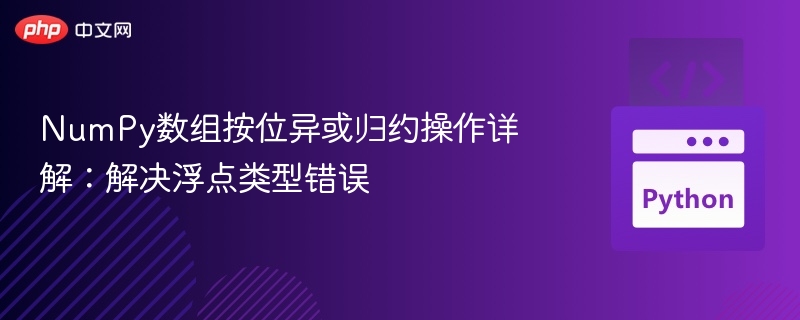
- 文章 · python教程 | 7小时前 |
- NumPy位异或归约操作全解析
- 259浏览 收藏
-
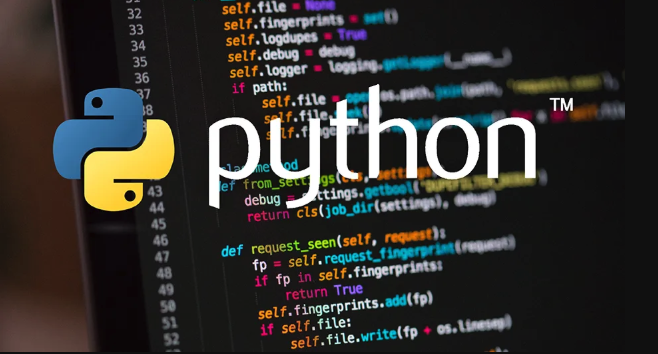
- 文章 · python教程 | 7小时前 |
- Python遍历读取所有文件技巧
- 327浏览 收藏
-
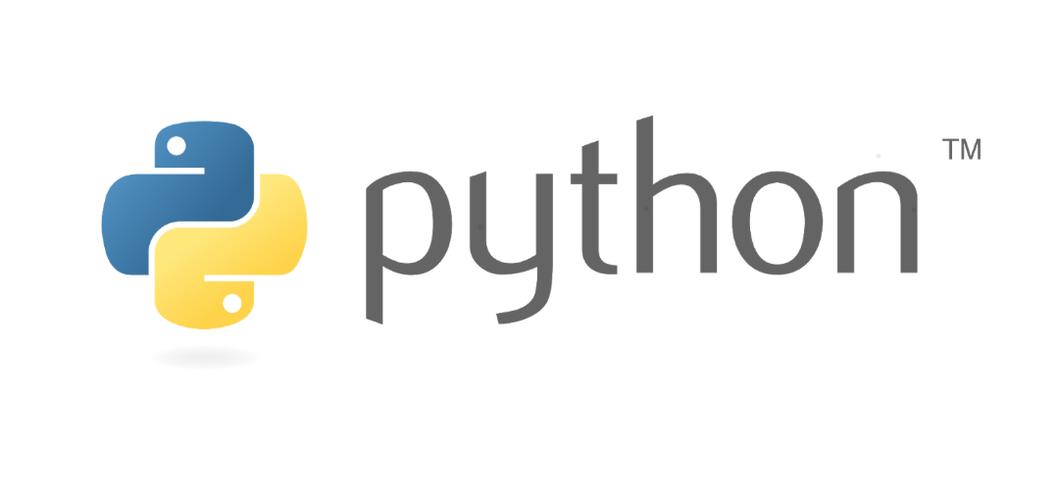
- 文章 · python教程 | 8小时前 |
- Python中index的作用及使用方法
- 358浏览 收藏
-
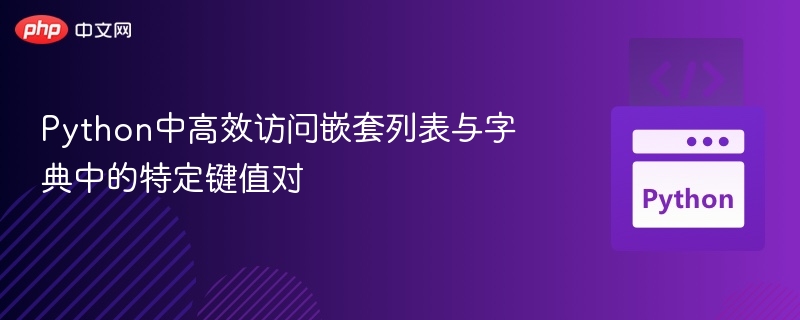
- 文章 · python教程 | 8小时前 |
- Python快速访问嵌套字典键值对
- 340浏览 收藏
-

- 文章 · python教程 | 9小时前 |
- Python中ch代表字符的用法解析
- 365浏览 收藏
-
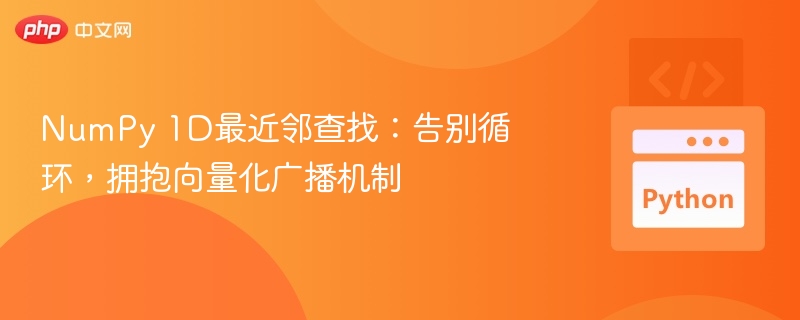
- 文章 · python教程 | 9小时前 |
- NumPy1D近邻查找:向量化优化技巧
- 391浏览 收藏
-

- 文章 · python教程 | 9小时前 | 正则表达式 字符串操作 re模块 Python文本处理 文本清洗
- Python正则表达式实战教程详解
- 392浏览 收藏
-
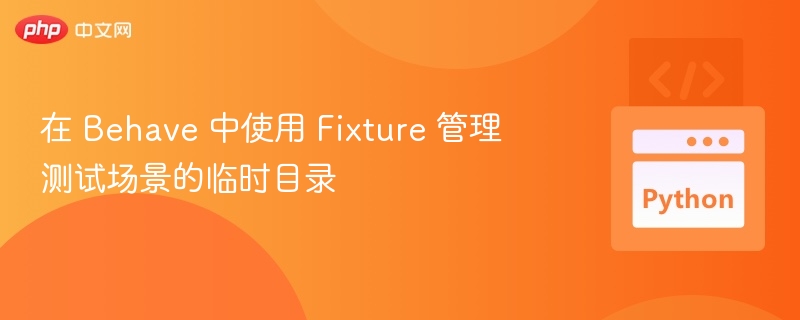
- 文章 · python教程 | 9小时前 |
- BehaveFixture临时目录管理技巧
- 105浏览 收藏
-
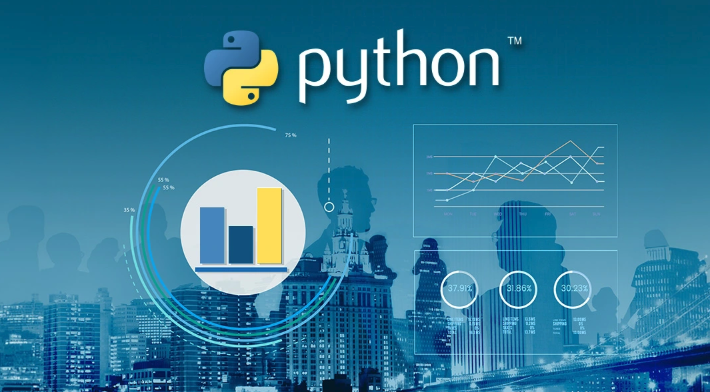
- 文章 · python教程 | 10小时前 | Python 余数 元组 divmod()函数 商
- divmod函数详解与使用技巧
- 442浏览 收藏
-
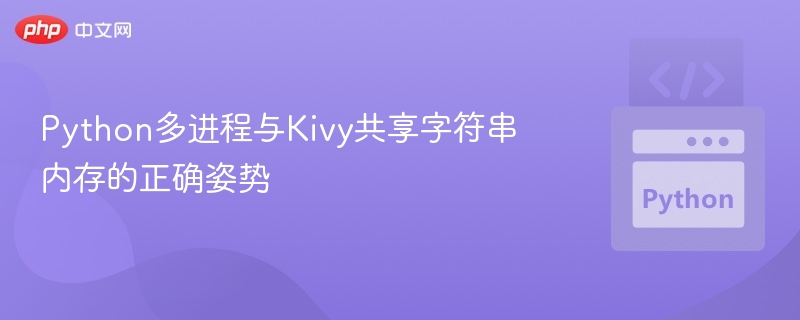
- 文章 · python教程 | 11小时前 |
- Python多进程共享字符串内存技巧
- 291浏览 收藏
-

- 前端进阶之JavaScript设计模式
- 设计模式是开发人员在软件开发过程中面临一般问题时的解决方案,代表了最佳的实践。本课程的主打内容包括JS常见设计模式以及具体应用场景,打造一站式知识长龙服务,适合有JS基础的同学学习。
- 543次学习
-

- GO语言核心编程课程
- 本课程采用真实案例,全面具体可落地,从理论到实践,一步一步将GO核心编程技术、编程思想、底层实现融会贯通,使学习者贴近时代脉搏,做IT互联网时代的弄潮儿。
- 516次学习
-

- 简单聊聊mysql8与网络通信
- 如有问题加微信:Le-studyg;在课程中,我们将首先介绍MySQL8的新特性,包括性能优化、安全增强、新数据类型等,帮助学生快速熟悉MySQL8的最新功能。接着,我们将深入解析MySQL的网络通信机制,包括协议、连接管理、数据传输等,让
- 500次学习
-

- JavaScript正则表达式基础与实战
- 在任何一门编程语言中,正则表达式,都是一项重要的知识,它提供了高效的字符串匹配与捕获机制,可以极大的简化程序设计。
- 487次学习
-

- 从零制作响应式网站—Grid布局
- 本系列教程将展示从零制作一个假想的网络科技公司官网,分为导航,轮播,关于我们,成功案例,服务流程,团队介绍,数据部分,公司动态,底部信息等内容区块。网站整体采用CSSGrid布局,支持响应式,有流畅过渡和展现动画。
- 485次学习
-

- ChatExcel酷表
- ChatExcel酷表是由北京大学团队打造的Excel聊天机器人,用自然语言操控表格,简化数据处理,告别繁琐操作,提升工作效率!适用于学生、上班族及政府人员。
- 3206次使用
-

- Any绘本
- 探索Any绘本(anypicturebook.com/zh),一款开源免费的AI绘本创作工具,基于Google Gemini与Flux AI模型,让您轻松创作个性化绘本。适用于家庭、教育、创作等多种场景,零门槛,高自由度,技术透明,本地可控。
- 3419次使用
-

- 可赞AI
- 可赞AI,AI驱动的办公可视化智能工具,助您轻松实现文本与可视化元素高效转化。无论是智能文档生成、多格式文本解析,还是一键生成专业图表、脑图、知识卡片,可赞AI都能让信息处理更清晰高效。覆盖数据汇报、会议纪要、内容营销等全场景,大幅提升办公效率,降低专业门槛,是您提升工作效率的得力助手。
- 3448次使用
-

- 星月写作
- 星月写作是国内首款聚焦中文网络小说创作的AI辅助工具,解决网文作者从构思到变现的全流程痛点。AI扫榜、专属模板、全链路适配,助力新人快速上手,资深作者效率倍增。
- 4557次使用
-

- MagicLight
- MagicLight.ai是全球首款叙事驱动型AI动画视频创作平台,专注于解决从故事想法到完整动画的全流程痛点。它通过自研AI模型,保障角色、风格、场景高度一致性,让零动画经验者也能高效产出专业级叙事内容。广泛适用于独立创作者、动画工作室、教育机构及企业营销,助您轻松实现创意落地与商业化。
- 3826次使用
-
- Flask框架安装技巧:让你的开发更高效
- 2024-01-03 501浏览
-
- Django框架中的并发处理技巧
- 2024-01-22 501浏览
-
- 提升Python包下载速度的方法——正确配置pip的国内源
- 2024-01-17 501浏览
-
- Python与C++:哪个编程语言更适合初学者?
- 2024-03-25 501浏览
-
- 品牌建设技巧
- 2024-04-06 501浏览

